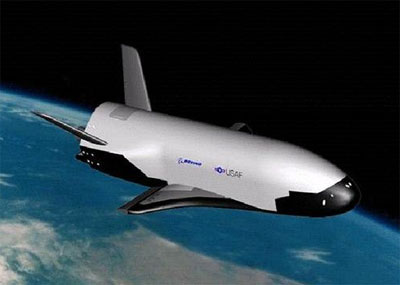Is the RLV industry emerging from hibernation?by Taylor Dinerman
|
| Since the failure of government programs the private sector has had the field to itself. |
It’s been about five years since the Air Force essentially shut down the American government’s effort to build a reusable launch vehicle (RLV). The leaders decided that it would take a technological breakthrough on the order of the switch from piston engines to jets to build a successful system. NASA efforts to put together a viable RLV program had lead to the X-33 debacle and the 2nd Generation RLV programs were unable to gain technical, political, or budgetary traction.
Since then the private sector has had the field to itself. Commercial suborbital rockets proved themselves when SpaceShipOne successfully won the Ansari X PRIZE. The New Shepherd program by Blue Origin, financed by Amazon CEO Jeff Bezos, seems to be making progress using ideas pioneered by Max Hunter and the DC-X program of the early 1990s.
In the purely suborbital field, Virgin Galactic’s SpaceShipTwo, being built by Scaled Composites, should be rolling out fairly soon, and the XCOR Lynx rocketplane is also on track for a first flight sometime next year. A healthy suborbital sector is attracting the attention of the scientific community. Alan Stern and the Suborbital Research Applications Researchers Group explained in a recent editorial in Space News that a combination of low cost and frequent flights will give scientists and educators a new set of options. This market will provide profits that can be recycled into the development of more powerful vehicles someday these could achieve orbit.
Since the DC-X last flew in 1996, there has been enormous progress, particularly in materials. The failure of the composite tanks that doomed the X-33 program would probably not occur today. Boeing and Airbus are both betting a lot on this technology for their next generation of airliners. Advanced RLVs will be able to take advantage of the work done in the commercial aviation industry.
Of course, information technology is still moving ahead and the military need for ever-better Unmanned Aerial Vehicles (UAVs) ensures that fight control systems are becoming more sophisticated and more reliable. This is providing the RLV industry with an ever-expanding resource that can be adapted to its needs. Recent advances in nanotechnology are also promising.
| Access to space is essential for both US national security and for the nation’s economic competitiveness. Yet America is still stuck with systems whose essential technology has hardly changed in decades. |
One sign that interest in RLV development is not simply confined to the NewSpace industry is the news that a subscale rocketplane was launched from a site at Spaceport America in New Mexico. The 2.4-meter-long test item may not seem like much, but the fact that Lockheed Martin carried out this test indicates that the major firms are taking another look at the potential of these vehicles. Another sign is that next year the X-37B will be launched into orbit on an Atlas 5. This spaceplane program may be controversial, but it shows that the Air Force has not given up entirely on reusability as a goal.
The need for RLVs is evident in the struggle over the future of human spaceflight. The Ares 1 and the alternatives such as SpaceX’s Falcon 9 and the Orbital Sciences’ Taurus 2, all use essentially the same old-fashioned technology. It is true that the Ares and the Falcon both have elements that can be recovered, refurbished, and reused. However, like the Shuttle’s solid rocket boosters, this process is a long way from the airliner-type operations that will be needed if the industry is to make the dramatic cuts in cost per pound to orbit that is the long-term goal.
Access to space is essential for both US national security and for the nation’s economic competitiveness. Yet America is still stuck with systems whose essential technology has hardly changed in decades. The reliability that has been achieved by the Delta 4 and the Atlas 5 cannot be dismissed lightly. The cost of failure is just too high. Future vehicles show promise, but they are simply expensive stopgaps on the way to an operational RLV.
The US has the capability to develop such a system. The question is, as always, a question of long-term political will.
